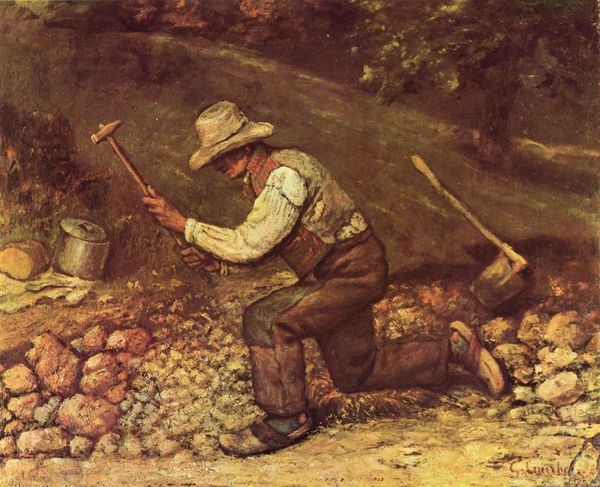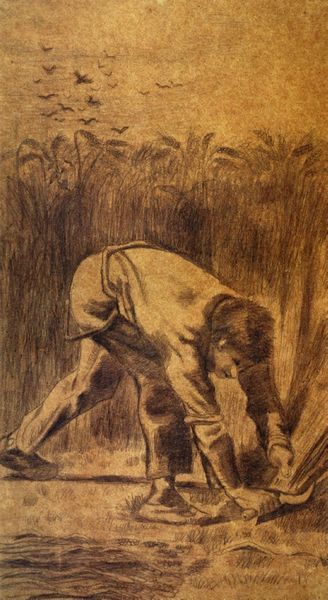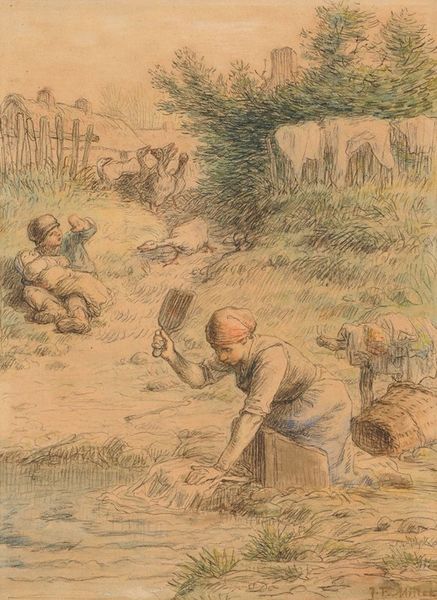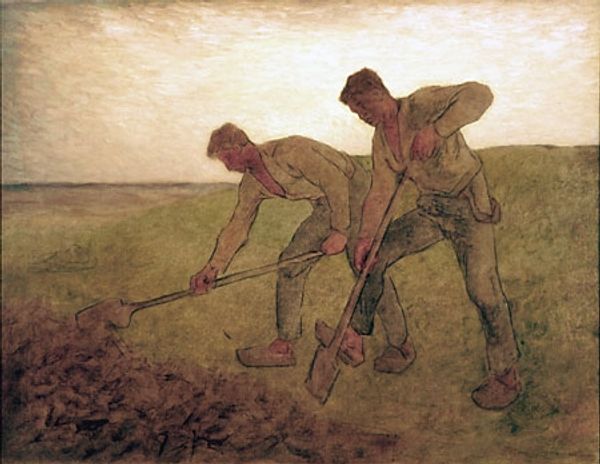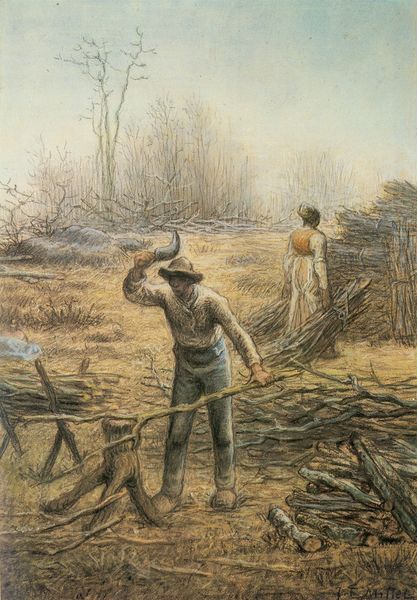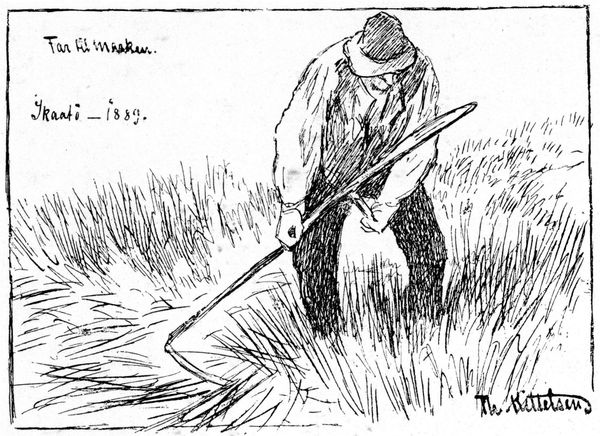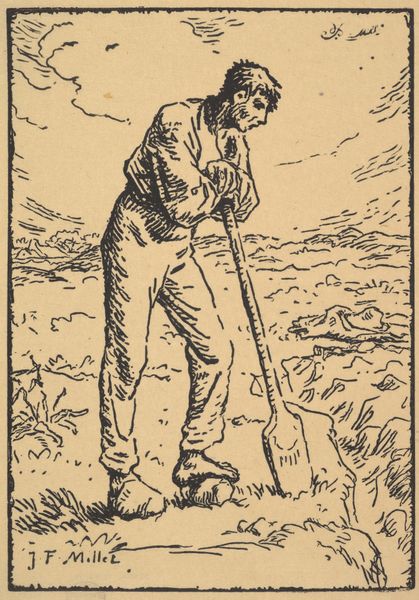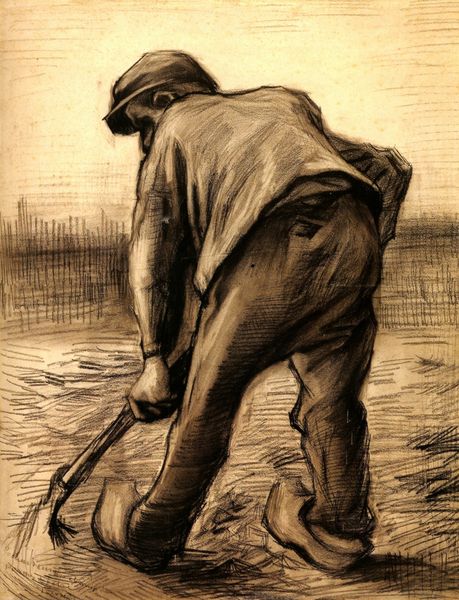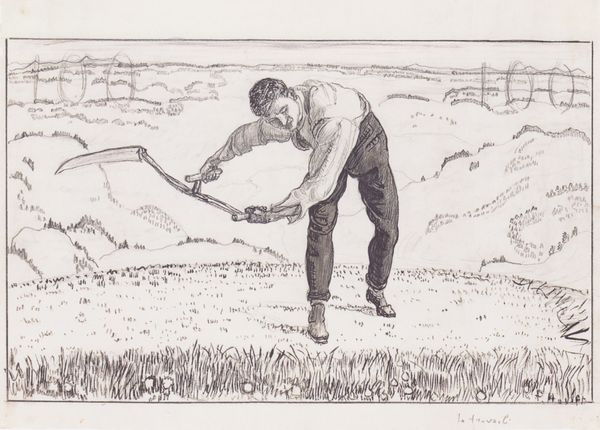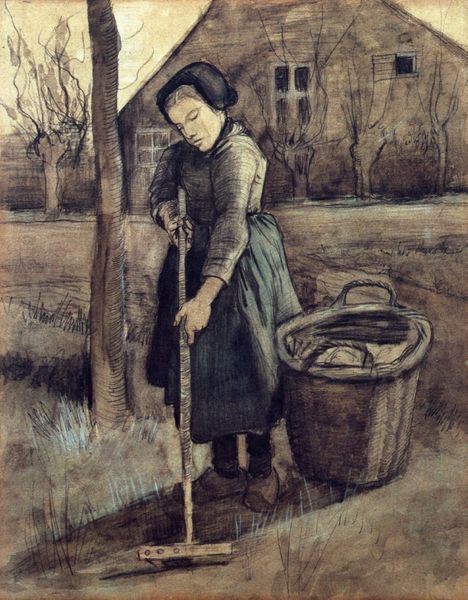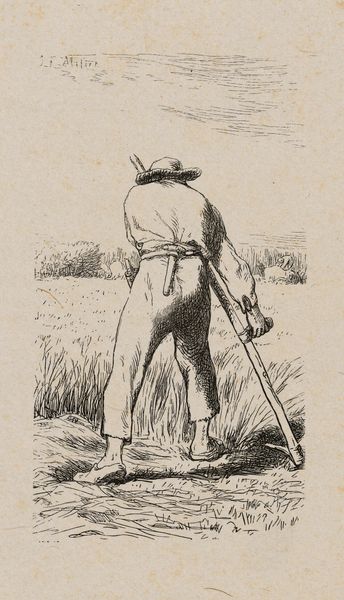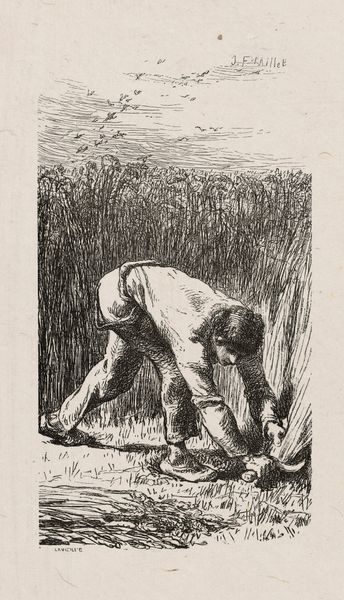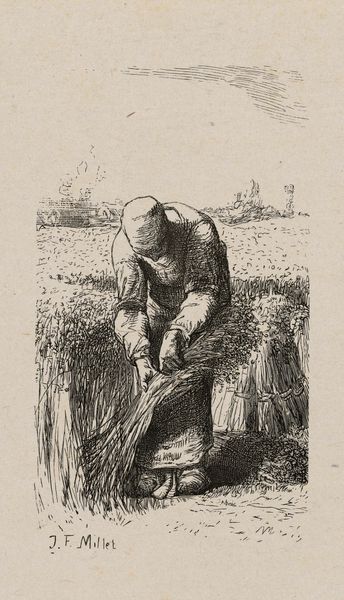
drawing, pencil
#
portrait
#
drawing
#
landscape
#
pencil
#
post-impressionism
#
realism
Dimensions: 61 x 47 cm
Copyright: Public domain
Curator: Editor: Here we have Van Gogh's "Boy Cutting Grass with a Sickle," made in 1881. I'm struck by the seeming mundanity of the subject matter – a boy performing what seems like everyday labor. How do you read this drawing? Curator: The piece’s value, for me, lies less in any individual’s psychological state or its aesthetic representation of nature, but rather in what it reveals about production. We see a very immediate representation of the boy's manual labour. Look at the material reality of the pencil strokes themselves; the density varies according to pressure and depicts the physicality of the scene. Do you think the medium speaks to the content in interesting ways? Editor: I think you’re right. The sketchiness makes it feel very immediate, very real. Not idealized at all. Like you said, it’s labour and toil that are made very visible through those deliberate pencil strokes. How does Van Gogh challenge more traditional artistic boundaries between high art and craft? Curator: By making visible this everyday task Van Gogh disrupts the historical narrative of what makes a worthy subject. Consider who it's for; that becomes a crucial element. The materials, too, suggest accessibility; pencil and paper, readily available and employed to document, not aggrandize, everyday life. The context of how it was made and distributed is really important. Van Gogh elevating what society considers marginal or inconsequential is a political gesture, no? Editor: That makes a lot of sense. It's not just the *what*, but the *how* and the *why*. The tools, the process... Curator: Exactly. It forces us to think about whose stories are deemed important enough to be told and who is doing the telling. It really makes you think about the conditions of artistic production. Editor: Thank you, this new perspective definitely encourages you to think of things beyond the obvious, more than just an aesthetic appreciation of the picture. Curator: Indeed, analyzing art can involve more than merely focusing on surface-level aesthetics. It's about unearthing the cultural context and production processes, transforming how we see art.
Comments
No comments
Be the first to comment and join the conversation on the ultimate creative platform.
